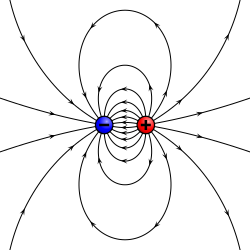If Maxwell were here, I'm sure he could answer this straightaway.
Since he is not, I'll ask those who know him well.
Assume a cable pair, twisted or untwisted or both, AC voltage source at one end, load at the other.
Two cases:
If the cable is fed (as in 120VAC) in an unbalanced manner, one wire swings 170v and the other is near 0v.
If the pair is fed balanced, as in opposing phase +60/-60 (to create the 120vAC across the load)...
How does the 'noise' radiated from the pair differ, or does it?
Since he is not, I'll ask those who know him well.
Assume a cable pair, twisted or untwisted or both, AC voltage source at one end, load at the other.
Two cases:
If the cable is fed (as in 120VAC) in an unbalanced manner, one wire swings 170v and the other is near 0v.
If the pair is fed balanced, as in opposing phase +60/-60 (to create the 120vAC across the load)...
How does the 'noise' radiated from the pair differ, or does it?

